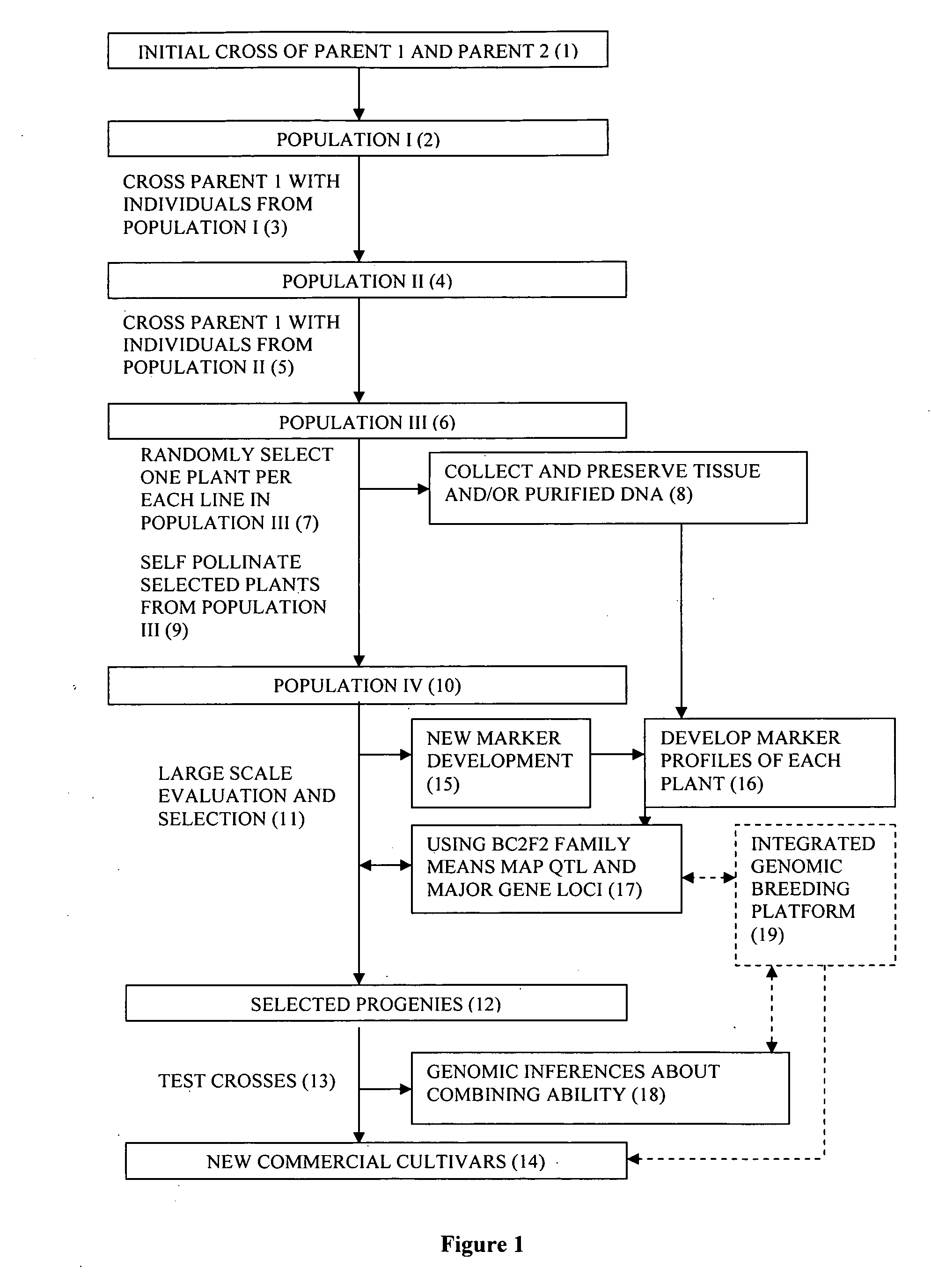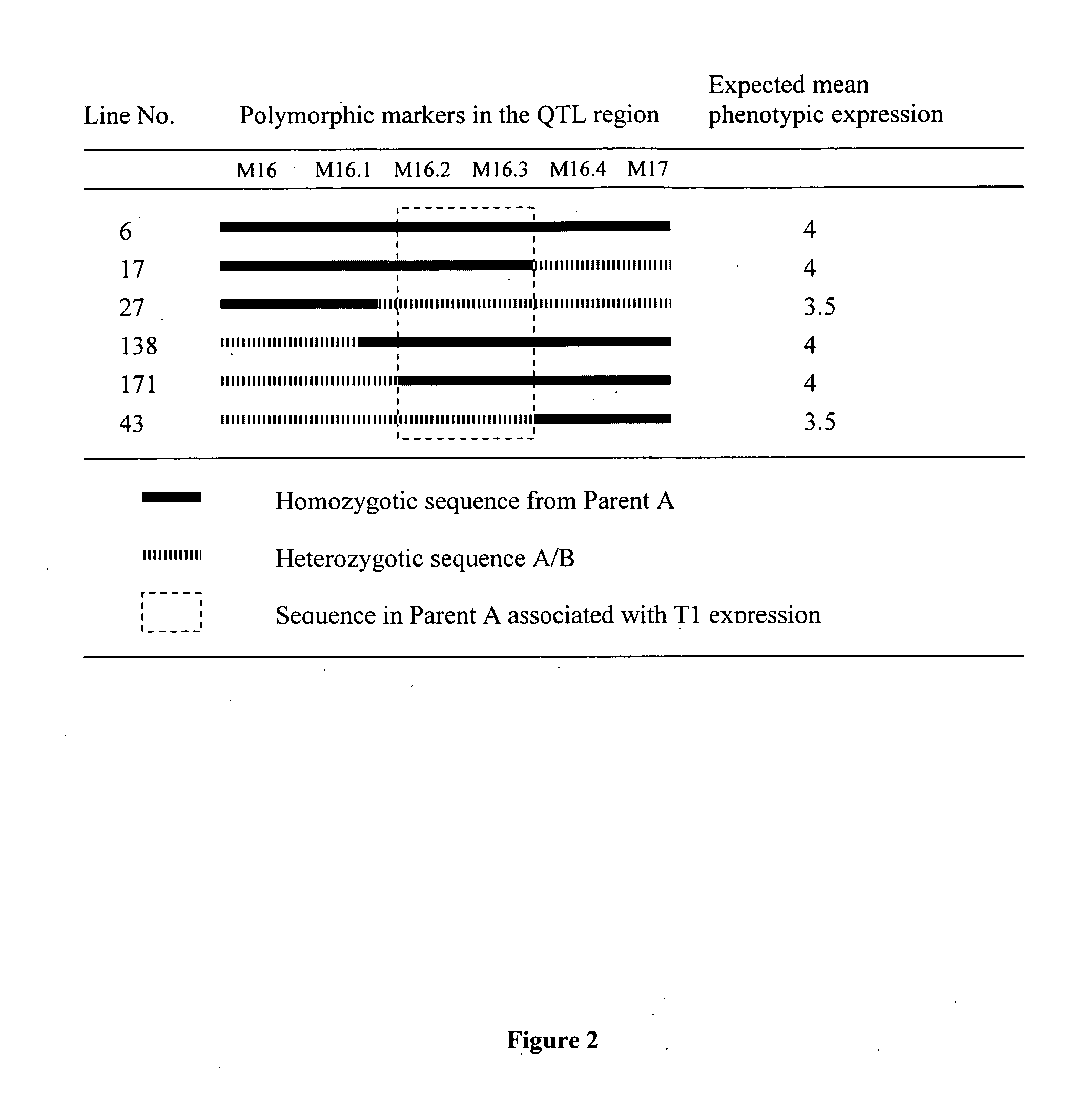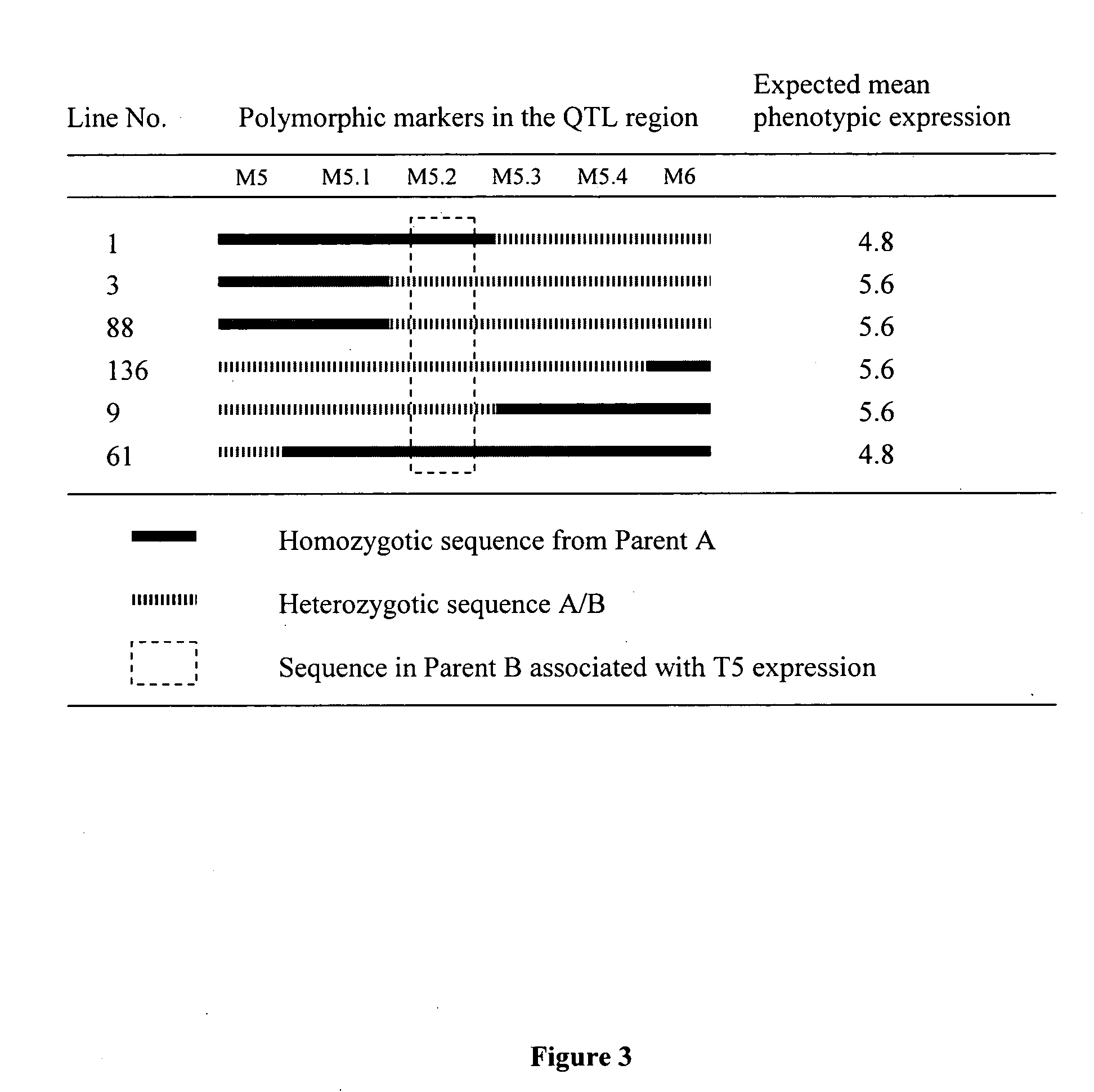Integration of commercial plant breeding and genomic technologies
a plant breeding and genomic technology technology, applied in the field of plant breeding, can solve the problems of authors not providing an integrated and clear blueprint that can be understood, and the development of mas and the application of mas in plant breeding is expensive, so as to achieve flexible and economically sound integration
- Summary
- Abstract
- Description
- Claims
- Application Information
AI Technical Summary
Benefits of technology
Problems solved by technology
Method used
Image
Examples
example 1
[0261]The initial cross can be made either between two inbreds or an inbred and a hybrid variety. It is important to select as Parent 1 an inbred of known good combining ability and commercial value that is actively being used in commercial product development. Parent 2 should be selected on the basis of highly desirable characteristics that are not observed in Parent 1. It is preferable that Parent 2 is derived from a distinctly different breeding pool.
[0262]A cross between two inbreds will produce genetically uniform (F1) Population I. In such case Population I can consist of as little as a single F1 plant. If Parent 2 is a hybrid variety then the resulting Population I will be genetically heterogeneous. In this case it is important that Population I consists of about 200 plants in order to ensure as complete as possible representation of Parent 2 alleles in the progeny.
[0263]Next step is a backcross step in which the F1 progeny (Population I) is crossed back to Parent 1 (the recu...
example 2
[0280]A cross is made between a fresh market tomato inbred “A” and an open pollinated heirloom variety “B”. In addition to having an overall balanced and commercially acceptable phenotype, inbred A has three highly desirable traits (T1A-T3A) that need to be preserved in the process of breeding, and two highly undesirable characteristics (T4A and T5A) that need improvement. This inbred has a history of being used in commercial product development and is known to produce high yielding commercial hybrids with inbreds X, Y and Z. Parent B has no commercial value but is superior to Parent A in the two characteristics for which Parent A is deficient. The two valuable characteristics of parent B are designated as T4B and T5B.
[0281]The objective is to obtain inbred lines essentially of the type A Parent that will contain both desirable traits from Parent B. Another equally important objective is to develop molecular markers closely linked to all five characteristics for future use in marker...
PUM
| Property | Measurement | Unit |
|---|---|---|
| Luminous intensity | aaaaa | aaaaa |
| Luminous intensity | aaaaa | aaaaa |
| Length | aaaaa | aaaaa |
Abstract
Description
Claims
Application Information
 Login to View More
Login to View More - R&D
- Intellectual Property
- Life Sciences
- Materials
- Tech Scout
- Unparalleled Data Quality
- Higher Quality Content
- 60% Fewer Hallucinations
Browse by: Latest US Patents, China's latest patents, Technical Efficacy Thesaurus, Application Domain, Technology Topic, Popular Technical Reports.
© 2025 PatSnap. All rights reserved.Legal|Privacy policy|Modern Slavery Act Transparency Statement|Sitemap|About US| Contact US: help@patsnap.com



